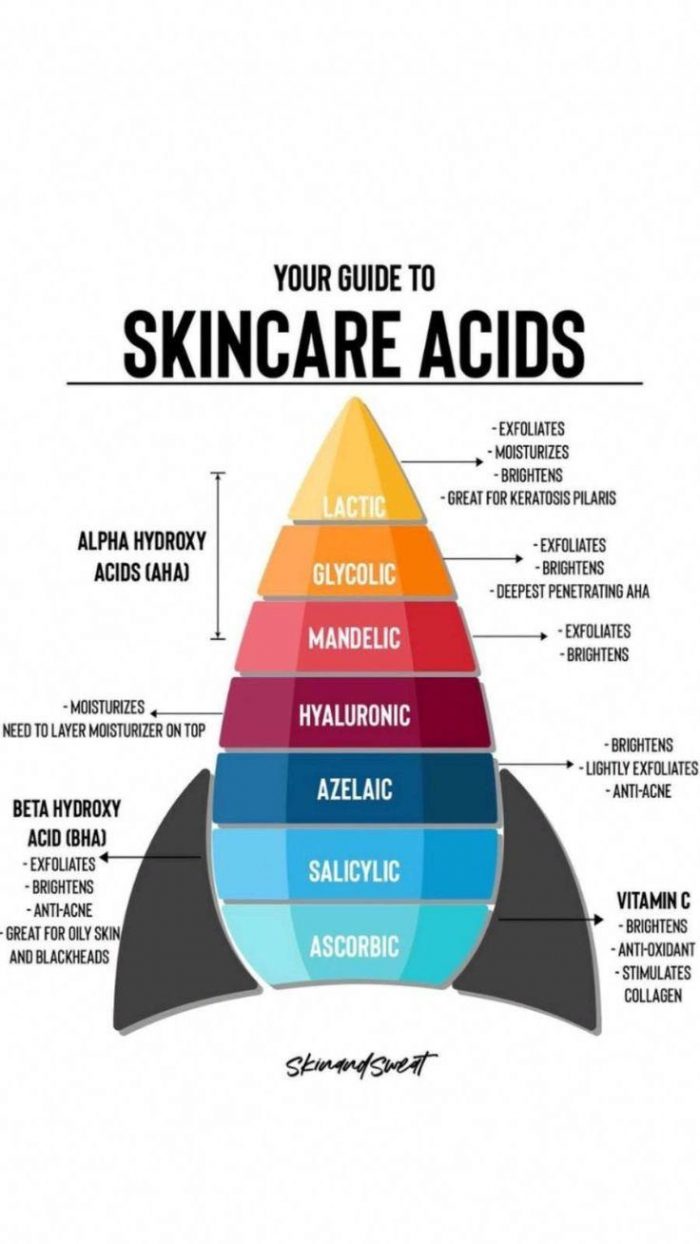
Skincare acids are a popular ingredient in skin care products and can help improve the appearance of your skin. But what are they exactly, and how do they work? In this article, we’ll explore the different types of skincare acids you may encounter at the drugstore or spa. We’ll also look at their benefits and side effects so you can make an informed decision about whether an acid treatment is right for you!
LACTIC ACID
Lactic acid is an alpha hydroxy acid (AHA), which means it has the ability to exfoliate the skin. It’s been used in skin care since the early 1900s, but it wasn’t until recently that lactic acid became popular among people who wanted to improve their complexion. Lactic acid is naturally occurring and can be found in milk as well as sugar cane. The lactic acid content in milk varies depending on what kind of cow you’re drinking from–some have higher levels than others–but generally speaking, human breast milk contains about 0.2% lactic acid while cow’s milk contains about 0.5%.
GLYCOLIC ACID
Glycolic acid is a chemical exfoliant that can be used on the skin. It’s an alpha-hydroxy acid (AHA), which means it’s derived from sugar cane and other fruits. Glycolic acid is one of several AHAs; others include lactic, citric and malic acids. Glycolic acid works by causing tiny cracks in your skin so that dead cells can shed more easily. This helps boost collagen production and reduce fine lines and wrinkles over time–but it also means you’ll need to use sunscreen every day while you’re using glycolic acid products because they make your skin more sensitive to sun damage! You should also avoid using any products containing retinoids while using glycolic acid because they can cause allergic reactions when combined together.
MANDELIC ACID
Mandelic acid is a naturally occurring organic compound that’s derived from bitter almonds. It can also be made synthetically, but the natural version is more effective and has fewer side effects. Mandelic acid works by breaking down dead skin cells on your face, which helps to reduce acne breakouts, fine lines and wrinkles over time. If you have sensitive skin or live in an area with extreme temperatures (hot or cold), then mandelic acid may not be right for you because it causes redness and irritation. If this happens to you while using mandelic acid: stop using it immediately! You might also want to consider switching out another product instead – such as salicylic acid – since they work similarly but without causing any irritation at all.
HYALURONIC ACID
Hyaluronic acid is a naturally occurring substance in the human body, found in the skin, eyes and joints. It plays an important role in keeping the skin hydrated by drawing water into it from other parts of your body. This helps to keep your skin looking plump and youthful-looking as well as protecting against wrinkles caused by dehydration. There are many skincare products available which contain hyaluronic acid such as serums, moisturisers and eye creams.
SALICYLIC ACID
Salicylic acid is a beta hydroxy acid (BHA) that’s found in many skincare products. It works by gently exfoliating the surface of your skin and helping to remove dead cells. By removing these old, dead layers of cells, salicylic acid makes way for new ones to grow underneath–thereby improving the appearance of pores as well as reducing acne scars and blemishes. The good news is that salicylic acid is very gentle on sensitive skin types; it doesn’t cause redness or irritation like some other AHAs can do! However, if you have dry or dehydrated skin then it might not be appropriate for you because it could dry out your face further instead of hydrating it like other AHAs would do (like glycolic acid). If this sounds like something that might happen then try using something else instead such as lactic or mandelic acids instead!
AZELAIC ACID
Azeleic acid is a naturally occurring fatty acid that’s derived from grains, nuts and seeds. It’s also found in the skin of grapes and olives, which explains why these fruits are so good for your complexion. Azeleic acid is powerful anti-inflammatory agent that can help reduce any redness or inflammation on your skin.
Skincare acids are a great way to improve the appearance of your skin without having to pay thousands of dollars for in-office procedures. Most people want to improve the appearance of their skin, but they don’t have thousands of dollars to spend on in-office procedures. Skincare acids are a great way to achieve this goal without having to break the bank. Acids can help with acne and hyperpigmentation (dark spots), fine lines, texture and tone–all things that are important when it comes to making your skin look its best. Acids also exfoliate by breaking down dead skin cells so that new ones can rise up through the surface more quickly than usual. Hopefully, this post has given you a better understanding of the different types of skincare acids available. You now know what their benefits are and how they can help your skin! If you’re looking for an affordable way to improve your complexion then consider trying one or more of these products.
